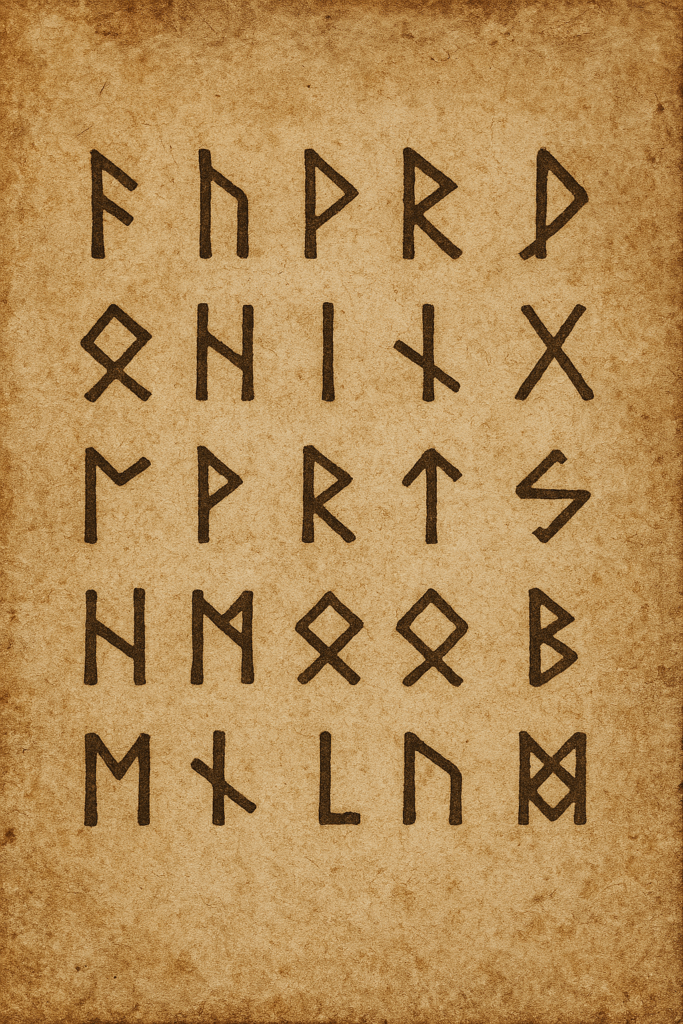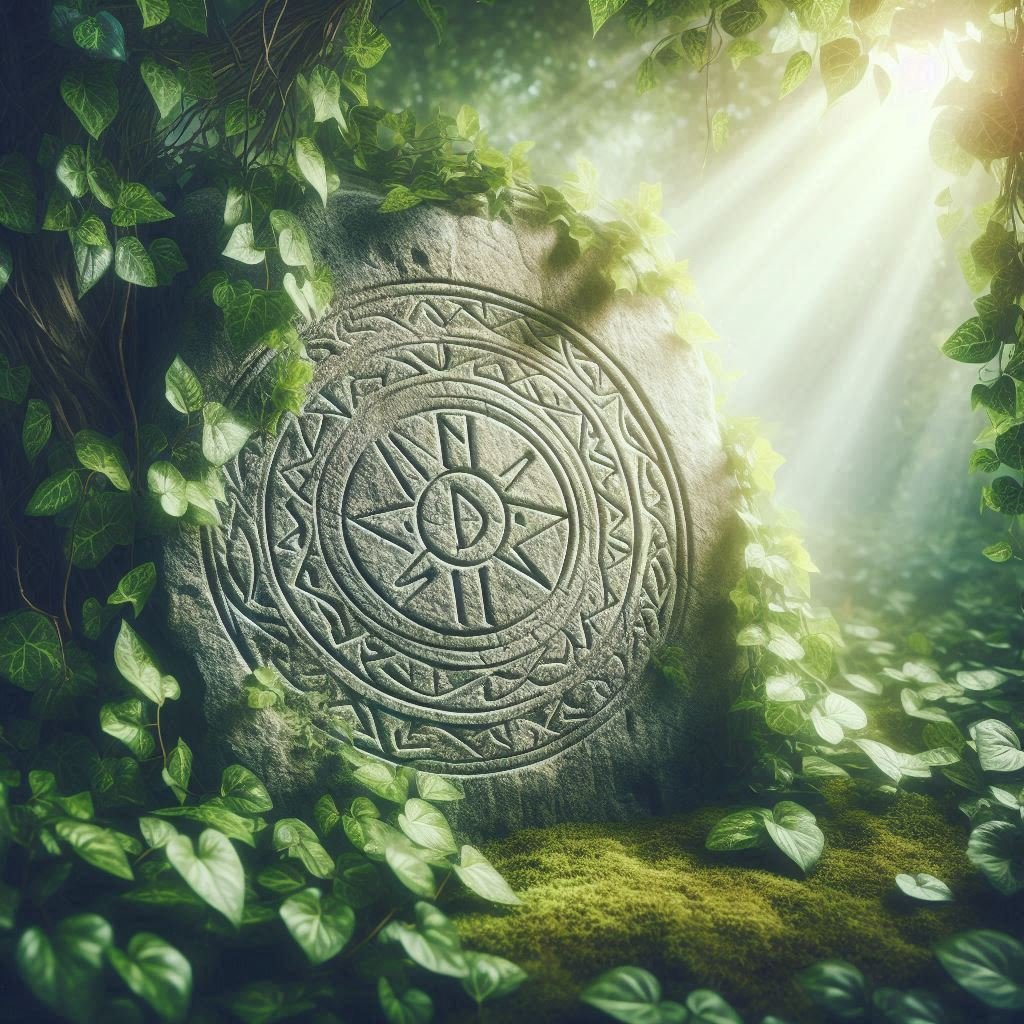
Runes history is very interesting and rich based on an ancient writing system originating among the Germanic peoples of Northern Europe. While they served as a practical script, they also held profound mystical and cultural significance, closely tied to magic, divination, and spirituality. Their enigmatic nature continues to intrigue and inspire, from their mysterious origins to their role in folklore and modern practices.
The Origin and Development of Runes
The exact origins of runes remain a subject of scholarly debate. They are believed to have emerged around the 1st or 2nd century CE, inspired by earlier writing systems such as the Old Italic alphabets (including Etruscan and Latin) or the Greek alphabet, introduced through trade, migration, and cultural exchanges with Mediterranean civilisations. This influence resulted in the creation of the Elder Futhark, the oldest known runic alphabet, consisting of 24 angular characters. The angular designs were practical for carving into materials like wood, stone, and metal.
The earliest known runic inscription is found on the Vimose Comb from Denmark, dated around 160 CE. Other significant early inscriptions include the Øvre Stabu spearhead from Norway and the Kylver Stone from Sweden, which features a complete Elder Futhark sequence. As Germanic languages evolved, so did the runic alphabets, leading to significant regional variations:
- Younger Futhark: Around 700 CE, this Scandinavian version reduced the Elder Futhark to 16 characters to reflect changes in the Old Norse language. It became prominent during the Viking Age and is widely found on runestones.
- Anglo-Saxon Futhorc: Expanded to 28–33 characters to accommodate Old English sounds, this version was used in England and Frisia from the 5th to 11th century CE.
- Medieval Runes: By the Middle Ages, runes adapted to Christian contexts, appearing alongside Latin texts in Scandinavia. They were used for practical purposes, such as marking ownership or recording transactions.
Uses of Runes Across Cultures
Runes served various purposes across different regions. In Scandinavia, they were primarily used for memorial inscriptions on runestones, commemorating the dead or marking significant events. In England, Anglo-Saxon runes were found in both secular and religious contexts, including charms and riddles. Beyond their practical uses, runes were imbued with mystical properties and used in magical practices. In Norse mythology, the god Odin sacrificed himself on the World Tree, Yggdrasil, for nine days to gain the wisdom of the runes. This myth underscores their divine and magical significance.
Runes were also used in rune casting, a divination practice involving the scattering of carved stones or sticks. Each rune carried specific meanings, such as Fehu for wealth and Ansuz for divine communication, allowing practitioners to interpret their placement and orientation. Additionally, runes were inscribed on amulets, weapons, and tools to invoke protection, luck, or specific powers.
Runes in Mythology and Symbolism
Runes are deeply intertwined with Norse mythology and Germanic folklore. They are often depicted as sacred symbols of divine knowledge and cosmic order. Runestones, monumental stones bearing runic inscriptions, served as markers of power, territory, or commemoration. For example, the Jelling Stones in Denmark honour King Gorm and his wife Thyra, while proclaiming Denmark’s Christianisation.
Certain runestones carried warnings or curses to deter tampering. The Saleby Runestone in Sweden is inscribed with a curse threatening bad luck or divine retribution upon those who destroy it. The runes’ mystical reputation is further emphasised in their associations with protection and healing. For instance, Algiz symbolises protection, while Laguz and Sowilo are tied to emotional cleansing and vitality.
Interesting Trivia and Folklore
- Odin’s Sacrifice: The myth of Odin hanging from Yggdrasil to discover the runes highlights their divine origins, emphasising their role as keys to wisdom and cosmic connection.
- Protective Charms: Vikings carved runes onto weapons, jewellery, and boats to ensure protection, success, and divine favour.
- Rune Casting: Modern rune casting traces its origins to ancient divination practices, where runes were scattered and interpreted based on their placement and orientation.
- The Curse of Runes: Many runestones carried warnings, such as curses to deter tampering, adding an aura of mystique and power to their inscriptions.
- The Wyrd Rune: Some modern interpretations include the speculative Wyrd rune, symbolising fate and interconnectedness, though historical evidence for its existence is limited.
- Runestones as Memorials: Scandinavian runestones often commemorated the dead or marked achievements, blending practical and spiritual purposes.
- Christian Integration: During medieval times, runes were adapted to Christian contexts, blending pagan traditions with Christian texts and iconography.
- Runes in Popular Media: J.R.R. Tolkien incorporated runic elements into his fictional scripts in The Lord of the Rings, inspired by their angular designs and mystical aura.
- Healing Runes: Specific runes, like Laguz and Sowilo, were believed to possess healing properties, supporting emotional balance and vitality.
- The Rök Runestone Mystery: The Rök Runestone in Sweden, covered in Elder Futhark inscriptions, remains one of the most enigmatic artifacts, with scholars debating its meaning for centuries.
Modern Revival and Legacy
In the 19th-century Romantic movement, runes experienced a revival as symbols of cultural heritage. They found renewed significance in esoteric and neopagan practices, where they are used for divination, meditation, and spiritual exploration. Their influence extends beyond spirituality into artistic designs, cultural symbolism, and fictional scripts.
Runes are far more than a writing system; they represent a bridge between the practical and the mystical, offering a glimpse into the beliefs, practices, and daily lives of the Germanic peoples. From their mysterious origins to their enduring legacy, runes continue to fascinate, connect, and inspire.
For information on how to use runes,see my post Using runes Using runes

Runes
Rune stones etched with ancient symbols offer insight, guidance, and reflection. Ideal for divination, meditation, and connecting with Norse traditions.
